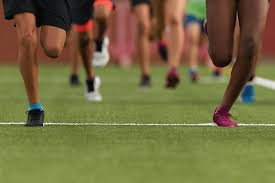Speed Training Fundamentals for Young Athletes: Tailoring for Sports Excellence
As a dedicated coaches at Atlas Performance Training, we understand the crucial role that speed plays in the success of young athletes. Whether they are aspiring basketball players, football stars, soccer enthusiasts, volleyball champions, rowing contenders, or baseball prodigies, speed is a fundamental aspect of their athletic journey. In this blog post, we will explore the foundational principles of speed training for young athletes, emphasizing its importance in sports performance. Additionally, we will delve into how speed training can be tailored to specific sports to meet the unique demands of each, and we will highlight training techniques and drills suitable for young athletes to enhance their speed and quickness.
The Importance of Speed in Sports: Speed is not just about running fast; it's about achieving peak performance in any athletic endeavor. For young athletes, developing speed is essential because it directly impacts their ability to compete effectively. Speed can be the difference between making that game-winning play or falling short. It can help athletes beat opponents to the ball, outrun defenders, and react quicker to changing game situations.
Tailoring Speed Training for Different Sports: One of the key principles we adhere to at Atlas Performance Training is the understanding that speed training is not a one-size-fits-all approach. Different sports place varying demands on an athlete's speed and agility. Here's a glimpse of how we tailor speed training for specific sports:
Basketball: Basketball demands explosive lateral movements, quick changes of direction, and the ability to accelerate and decelerate rapidly. Training drills focus on agility, coordination, and short bursts of speed.
Football: Football players need a combination of linear speed, agility, and the ability to cut and change direction swiftly. Our training includes ladder drills, cone drills, and sprinting techniques specific to football.
Soccer: Soccer requires constant running, sudden sprints, and endurance. Speed training for soccer players emphasizes both short bursts of speed and maintaining speed over longer distances.
Volleyball: Volleyball players benefit from quick reactions and explosive jumps. Speed training incorporates vertical leap drills and agility exercises to improve responsiveness on the court.
Rowing: Rowers require exceptional lower-body strength and explosive power. Speed training includes sprint intervals and exercises to enhance leg drive.
Baseball: Baseball players need speed not only on the bases but also in the field. Speed drills for baseball include base-running techniques and outfield agility training.
Training Techniques and Drills: At Atlas Performance Training, we utilize a variety of training techniques and drills to help young athletes enhance their speed and quickness. Some of these include:
Sprinting drills to improve linear speed.
Agility some ladder drills to enhance body control, footwork, and coordination.
Cone drills for improving change of direction.
Plyometric exercises to increase explosiveness, used in concert with lower body strength development training.
Mobility and flexibility training to improve movement patterns and to limit risk of injury.
Speed development training for young athletes is a multifaceted process that combines science, dedication, and sport-specific knowledge. At Atlas Performance Training, we pride ourselves on our ability to tailor speed training programs to meet the unique needs of athletes in various sports. By understanding the foundational principles of speed and applying them in a sport-specific manner, young athletes can unlock their full potential and excel in their chosen disciplines. Stay tuned for more insights into athlete performance training tailored to your sport!

